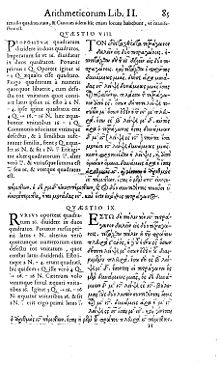 |
| Pierre de Fermat |
My latest proof of Fermat's Conjecture is available for download here: Fermat Paper .A slide show video can be seen here FLT video The introduction and a few passages are listed below, subject to formatting limitations, together with the conclusions and explanatory diagrams.
The main idea is that a unique tangent to the curve xn is determined by the variables a and c. The perpendicular drawn from the point where the tangent meets the cuve cuts the x-axis at K and it is the properties of K that determine the structure of the proof. The significance of this parametric variable is explained below in the passage about Pythagorean Triples.
A key property of the curve, when n > 2, is that equal decrements to the left of K correspond to unequal increments to the right. This is because the differential coefficient of the curve is
nKn-1
being non-linear but when n = 2, the differential coefficient is a linear function.
The proof strategy is to show that the variables a and c cannot both be integers when K is an integer. However, it is pretty clear that K is never an integer, so two further proofs are required under the assumptions that K is a rational fraction and K is an irrational number.
When K is an integer it is impossible for the secant to pass through integer points in the plane. When K is a rational fraction, this is also the case. When K is irrational then the secant can pass through integer points but the variable b cannot be rational. This situation constitutes the proof of FLT.
The mathematics involved in the proof is elementary and would certainly have been within the lexicon of Pierre de Fermat. An image of his 1621 translation of Diophantus whose margin could not hold Fermat's “marvelous proof” is shown below.
Introduction
The
aim of this paper is to establish a more direct proof of Fermat’s Last Theorem than the proof published by Andrew Wiles in The Annals of Mathematics 142 (1995). The
main idea is that the three terms an,
bn and cn all lie on the curve xn which facilitates the
construction of diagrams showing the relation between these terms and several
auxiliary variables used in the proof. The two diagrams used are shown in the
annex.
Fermat’s Conjecture
Fermat’s
Conjecture is: There are no natural numbers a,
b, c, n such that an + bn
= cn when n > 2.
FLT
may be expressed formally as: NSabcn∈
ℕ
an + bn = cn
subject
to the following conditions:
(1) a,b,c
and n are distinct natural numbers abcnℕ
(2) a,b and c have no common factors abc NCF
(3) n is greater than
2. n>2
(4)
a useful convention a<b<c
(5)
n is a prime number
Parity limitations
Condition
(2) implies that a, b and c cannot all be even numbers, otherwise they would have the common
factor 2. Furthermore, if any two
variables are even numbers then they have the common factor 2. Consequently, two of the factors must
be odd and the third even. It will be shown later that b must be an odd variable given condition (3) so either a or c
is even.
Analysis of K
This
special characteristic explains why Pythagorean triples are possible because a and c always lie symmetrically about K. It will be shown below that this is not the case when n > 2 so the secant can never simultaneously
intersect integer values of (a, an)
and (c, cn) when K∈ℕ.
The
variables a and c can be defined in terms of K
as follows:
a = K – q
and c = K + p so that c – a = p + q, where p and q are deviations on either side of K.
A secant may be formed by moving the tangent an integer distance to the left of K.
When
n =2 an equal deviation occurs to the
right of K so that p = q. The underlying reason is that the
differential coefficient of x2 is
the linear function 2x. When n
> 2 it is intuitively evident
that an integer move to the left will result in a lesser and possibly
fractional deviation to the right where p
< q.
Summary and conclusion
(1)
If K is an integer then g is not an integer so either a is not an integer or c is not an integer.
(2)
If K is a rational fraction then g cannot be an integer so either a is not an integer or
c
is not an integer
(3)
If K is an irrational number then
either n is irrational or b is irrational.
In
arriving at these conclusions the negative hypothesis Sabcn∈ℕ an + bn = cn
was assumed together with the conditions (1) through
(5) applicable to FLT. The three conclusions above prove that the negative
hypothesis under the given conditions is inconsistent, consequently FLT
must
be true reductio ad absurdum.







